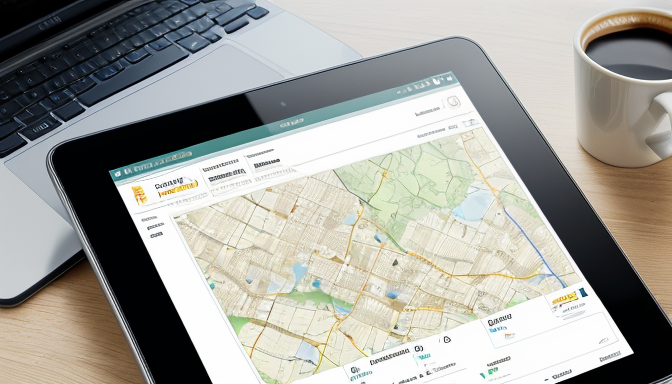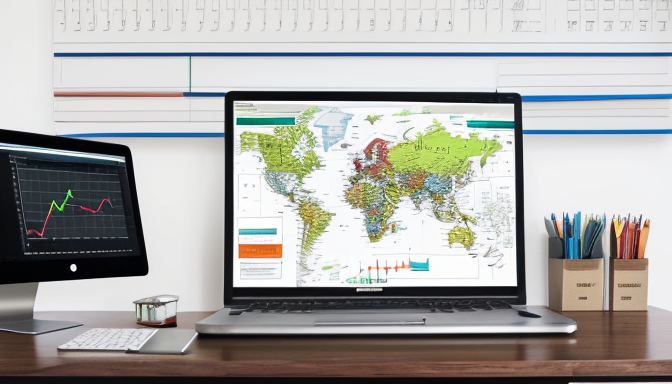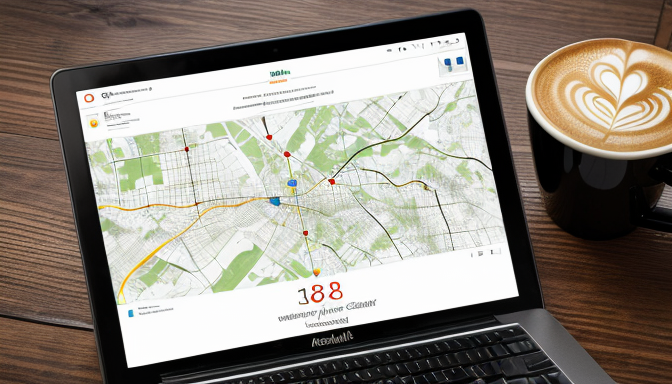
In today’s digital world, local visibility is everything. Businesses with multiple locations face unique challenges. How do you ensure that each location shines in search results? That’s where scaling Maps SEO for multi-locations comes into play. It’s not just about being found; it’s about being recognized as a trusted name in each area you serve.
First, let’s talk about the importance of optimizing your Maps SEO. Each location needs its own set of keywords. Think of it like tailoring a suit. Just as you wouldn’t wear a one-size-fits-all outfit, you can’t use the same keywords for every location. Instead, focus on local terms. For example, if you have a pizza shop in New York and another in Chicago, use phrases like “best pizza in New York” and “top Chicago deep-dish pizza.” This helps search engines understand where your business belongs.
Next, consider your local listings. It’s crucial to keep them updated and consistent. Imagine walking into a store only to find it’s closed, even though the hours online say otherwise. Frustrating, right? To avoid this, ensure your business name, address, and phone number (NAP) are the same across all platforms. This consistency builds trust and improves your Maps SEO. When potential customers see accurate information, they’re more likely to choose your business.
Now, let’s not forget about user engagement. Encourage customers to leave reviews. A positive review can be like a golden ticket. It not only boosts your reputation but also signals to search engines that your business is worth showing. Respond to reviews, both good and bad. This shows you care. It’s like having a conversation with a friend; it builds a connection.
But how do you keep track of all this? Monitoring your Maps SEO performance is key. Use tools like Google My Business Insights. This allows you to see how customers find your locations. Are they searching for your business name, or are they looking for a service you offer? Understanding this can help you tweak your strategy.
In conclusion, scaling Maps SEO for multi-locations is all about visibility, consistency, and engagement. When you optimize for each location, unify your brand presence, and monitor your performance, you’re setting yourself up for success. Remember, it’s not just about being seen; it’s about being chosen. So, take these steps to ensure that your business stands out in every community you serve.

Optimize Maps SEO for Multi-Locations
When it comes to optimizing Maps SEO for multi-locations, there’s no one-size-fits-all approach. Each location is unique, and so are the search behaviors of your potential customers. Imagine you own a chain of coffee shops. The way people search for coffee in New York City might differ from how they search in a small town. This is why focusing on local keywords is crucial. You want to ensure that your business pops up when someone nearby searches for a delicious cup of coffee.
Start by identifying the keywords that matter most to each location. Use tools like Google Keyword Planner or SEMrush to find local search terms. Think about what your customers might type into their phones. Are they looking for “best coffee near me” or “coffee shop in [City Name]”? These phrases are gold. Incorporate them naturally into your business listings, website content, and even blog posts. The goal is to make your business relevant to local searches.
Next up is local listings. Ensure that your business is listed on platforms like Google My Business, Yelp, and Bing Places. Each location should have its own listing with accurate information. This includes your address, phone number, and hours of operation. Consistency is key. If your address differs slightly across platforms, it can confuse search engines and potential customers. Use the same format for your address everywhere. For example:
| Location | Address |
|---|---|
| New York | 123 Coffee St, New York, NY 10001 |
| Los Angeles | 456 Brew Ave, Los Angeles, CA 90001 |
But it’s not just about having the right information. You also need to engage with your customers. Encourage reviews and respond to them. When potential customers see that you’re active and care about feedback, they’re more likely to choose your business. Think of it as building a relationship. The more you engage, the more trusted you become.
Lastly, don’t forget about your website. It should be optimized for local searches too. Create individual pages for each location. Each page should have unique content tailored to that specific area. For instance, if you have a coffee shop in New York, write about local events you’re involved in or partnerships with nearby businesses. This not only boosts your SEO but also connects you with the community.
In conclusion, optimizing Maps SEO for multi-locations is all about understanding your audience and being consistent. By focusing on local keywords, maintaining accurate listings, engaging with customers, and tailoring your website content, you can significantly improve your visibility. Remember, the more relevant you are to local searches, the better your chances of attracting new customers. So, gear up and start optimizing!

Unify Maps SEO for Multi-Locations
When it comes to unifying Maps SEO for multi-locations, consistency is key. Imagine you’re at a restaurant. You expect the same delicious meal no matter which branch you visit, right? The same principle applies to your business. When customers search for you online, they want a cohesive experience across all locations. If your Maps SEO isn’t aligned, it can confuse potential customers and impact your visibility.
To achieve this, start with your branding. Ensure that your business name, address, and phone number (NAP) are consistent across all platforms. This means your Google My Business listings, social media, and website should all reflect the same information. A small discrepancy can lead to lost customers. For example, if one location lists its phone number with dashes and another without, it can create confusion.
Next, focus on your keywords. Use location-specific keywords that reflect the area you’re serving. For instance, if you have a coffee shop in New York and another in Los Angeles, your SEO strategy should emphasize those city names. This helps search engines understand where you are and who you serve. Think of it like a map; if the directions are unclear, you’ll get lost.
Engagement is another vital aspect of unifying your Maps SEO. Encourage reviews from customers at each location. Positive feedback not only boosts your credibility but also helps with your local rankings. Responding to these reviews shows you care about your customers, which can lead to increased loyalty. Remember, people love to share their experiences. A happy customer can be your best advertisement.
Moreover, consider creating unique content for each location. This doesn’t mean you need to write entirely different pages. Instead, highlight what makes each branch special. Perhaps one location has a cozy reading nook, while another offers live music on weekends. These details not only enrich your content but also improve your SEO. It’s like adding spices to a dish; the right mix can elevate the flavor.
Finally, don’t forget to monitor your performance. Use tools like Google Analytics and Google Search Console to track how each location is performing. Are customers finding you easily? Are they engaging with your content? This data is invaluable. It allows you to make timely adjustments and ensures that your Maps SEO for multi-locations remains effective.
In summary, unifying your Maps SEO for multi-locations is about creating a seamless experience for your customers. Keep your branding consistent, use strategic keywords, engage with your audience, and monitor your performance. By doing so, you’ll not only enhance your visibility but also foster trust and loyalty among your customers.

Monitor Maps SEO for Multi-Locations
When it comes to monitoring Maps SEO for multi-locations, it’s all about keeping your finger on the pulse. You want to know how your business is performing across different areas. Think of it like checking the health of a tree with multiple branches. Each branch represents a location. If one branch is wilting, you need to figure out why and how to fix it.
First things first, you need to track key metrics. What are these metrics? Well, they include:
- Visibility: How often does your business appear in local search results?
- Clicks: Are people clicking on your listing?
- Engagement: How are users interacting with your maps listing?
- Reviews: What are customers saying about you?
Using tools like Google Analytics and Google My Business Insights can help you gather this data. These tools are like your personal assistants, providing you with valuable insights. They help you see which locations are thriving and which need a little TLC.
Once you have your data, it’s time to analyze it. Look for trends. Are certain locations getting more clicks? Why? Maybe they have better reviews or more localized content. On the flip side, if a location is underperforming, dig deeper. Is the address correct? Are the hours up to date? Small details can make a big difference.
Another key aspect of monitoring your Maps SEO is responding to reviews. This is your chance to engage with customers. If someone leaves a glowing review, thank them! If there’s a negative review, address it. Show potential customers that you care. This engagement can boost your local SEO.
Lastly, don’t forget about reporting. Regularly compile your findings into a report. This doesn’t have to be fancy, just clear and concise. Share it with your team. Discuss what’s working and what isn’t. Think of it as a team huddle; you’re all in this together.
In summary, monitoring Maps SEO for multi-locations is crucial for any business looking to enhance its visibility. By keeping an eye on key metrics, analyzing data, engaging with reviews, and reporting findings, you can ensure that your branches are healthy and thriving. Remember, your goal is to be the go-to choice in every location!
Frequently Asked Questions
- What is Maps SEO and why is it important for multi-locations?
Maps SEO refers to the optimization techniques used to enhance a business’s visibility in local search results, particularly on mapping services like Google Maps. For businesses with multiple locations, effective Maps SEO is crucial because it helps each location appear prominently in local searches, driving foot traffic and increasing brand awareness in various regions.
- How can I optimize my Maps SEO for different locations?
To optimize your Maps SEO for various locations, focus on relevant local keywords, ensure that each location has a unique and complete Google My Business listing, and encourage customer reviews. Engaging with users through local content and maintaining updated information across all platforms also significantly boosts visibility.
- Why is unifying Maps SEO across locations necessary?
Unifying your Maps SEO ensures that your brand maintains a consistent presence and message across all locations. This consistency builds trust and recognition among customers, making it easier for them to identify your brand no matter where they are. Think of it as creating a cohesive story that resonates with your audience everywhere.
- What tools can I use to monitor my Maps SEO performance?
There are several tools available for monitoring Maps SEO performance, including Google Analytics, Google Search Console, and specialized local SEO tools like Moz Local and BrightLocal. These tools help track key metrics such as search visibility, user engagement, and customer interactions, allowing you to make data-driven adjustments to your strategy.
- How often should I update my Maps SEO strategy?
It’s essential to regularly review and update your Maps SEO strategy, ideally every few months or whenever you notice significant changes in performance metrics. Keeping your information fresh and relevant is key to staying competitive in local search results, much like how a garden needs regular tending to flourish.



